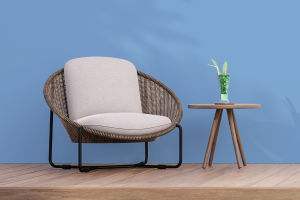In the dry autumn and winter seasons, many families purchase and use humidifiers.
However, there are also many rumors surrounding humidifiers. For example, some people believe that using humidifiers can lead to respiratory diseases. So, is this true?
From a theoretical perspective, the role of a humidifier is simply to increase air humidity within a range suitable for the human body, and it should not cause any health problems. However, in practice, if proper care is not taken during the humidification process, there can indeed be associated risks.
So, what is "humidifier lung"?
The issue lies with ultrasonic humidifiers, which are popular due to their low price and noticeable humidifying effect.
The misty effect we often see, with visible water vapor, is characteristic of ultrasonic humidifiers. These devices atomize various substances into aerosols suspended in the air.
Many infectious diseases can be transmitted through droplets, as pathogens can attach to them. Inadvertently inhaling these droplets can lead to infections. Humidifiers provide a means for this to occur.
They atomize various substances in water, including bacteria, impurities, and chemicals, into aerosols that can be suspended in the air. Inhaling these aerosols can easily lead to respiratory system diseases, hence the term "humidifier lung".
Another issue is excessive humidity. Many pathogens thrive in humid environments. If the environment is excessively humid due to the continuous use of a humidifier, it can provide favorable conditions for pathogens to thrive and survive longer, increasing the risk of infection.
Therefore, while using a humidifier for humidification is not inherently problematic, improper use can pose health risks.
Regarding the choice of humidifiers:
There are ultrasonic, cold evaporative, and warm evaporative humidifiers. Before purchasing a humidifier, it's important to understand the principles of humidification.
1. Ultrasonic humidifiers:
These devices use high-frequency vibrations to turn water into fine droplets, creating mist for humidification.
They do not have filters, so they require high-quality water such as distilled or purified water. Daily water replacement and cleaning of the water outlet are necessary. They also have limited and uneven humidification coverage.
2. Cold evaporative humidifiers:
These humidifiers operate by accelerating water evaporation using a fan. They do not produce visible mist like ultrasonic humidifiers. They require regular filter replacement, which can be costly.
3. Warm evaporative humidifiers:
These humidifiers heat water to 100°C to sterilize it, then release the distilled steam at around 50°C for humidification.
The steam released is clean and can be directly used with tap water, without the need for filters. They are preferred over cold evaporative humidifiers, as the warm steam is easier for the body to absorb, and they do not require filters or pose concerns about inadequate sterilization.
In summary, a warm evaporative humidifier is preferable, as its steam is cleaner and more easily absorbed by the body, and it does not require filters or raise concerns about inadequate sterilization.


